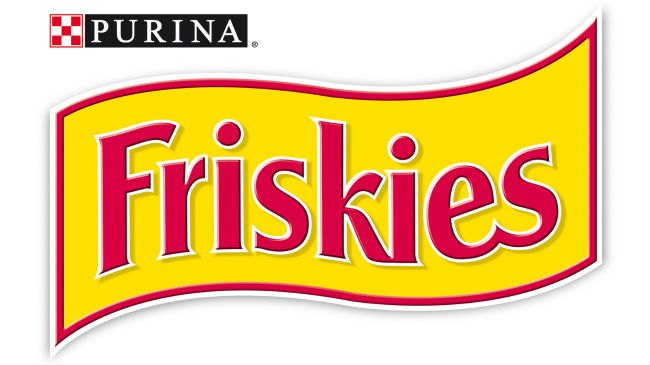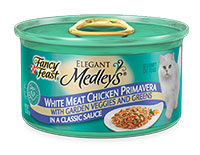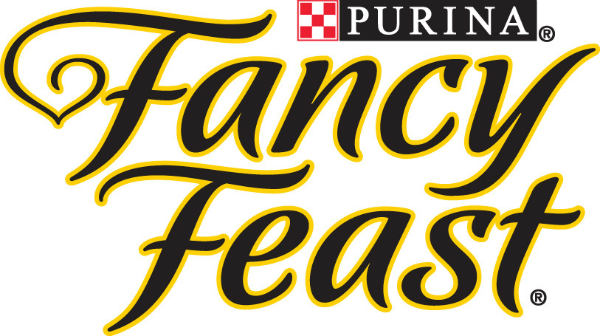Do you enjoy playing around with your cat? Cats have been known to be most active when they are healthy and well fed. To ensure that your cat remains active, it must feed on foods that will provide it with all the nutrients necessary. Doing so might prove to be somewhat hard because the current cat food market is overflowing with different formulas from different brands.
Fancy Feast is amongst the many well-known cat food brands out there. This cat food brand has many different formulas under it and one of them is the Flaked with Tuna in Sauce (wet). According to Fancy Feast, this formula not only meets the nutritional requirements set by AAFCO, it has also been made with high-quality ingredients that ensure optimum nutrition and health.
So, is all this true?
Ingredients used to make this formula
Water sufficient for processing, fish, poultry, meat by-products, wheat gluten, tuna, soy flour, artificial and natural flavors, calcium phosphate, potassium chloride, added color, xanthan gum, carrageenan, salt, Taurine, choline chloride, Vitamin E supplement, zinc sulfate, thiamine mononitrate, ferrous sulfate, niacin, sodium nitrite (to promote color retention), manganese sulfate, calcium pantothenate, copper sulfate, Vitamin A supplement, menadione sodium bisulfite complex (source of Vitamin K activity), pyridoxine hydrochloride, riboflavin supplement, Vitamin B-12 supplement, biotin, folic acid, Vitamin D-3 supplement, potassium iodide. B-6070
Review of the first five ingredients
Water sufficient for processing: For canned foods, water being at the top of the ingredients list is normal. As you could probably guess, water doesn’t do anything in the way of providing nutritional value, but it does help to keep the food moist. Sometimes a broth will be used instead of water, but all canned foods will require a high amount of moisture content.
Fish: The fish used in canned pet foods usually includes parts of the fish not typically used for human consumption. It is high in phosphorus and magnesium, which can be an issue in cats with a history of urinary tract disorders or kidney disease. Most fish used in pet food is that of very low quality, including farmed fish and discarded fish that is deemed unacceptable for human consumption. There is also a risk of mercury exposure as many types of fish contain a high mercury level. Over long periods of time, this can become hazardous. It is also important to try and find a cat food with ethoxyquin free fish. Most cat food brands do not disclose if their fish is ethoxyquin free and if it isn’t, that could pose some problems. Most cats love the taste of fish and will be happy to eat it, but it isn’t part of a regular diet for wild cats. Nonetheless, this is a high protein source with essential omega-3 and omega-6 fatty acids.
Poultry: Contrary to popular belief, poultry does not always consist of chicken products. Poultry can include a number of different birds including chickens, fowl, quail, turkeys, ducks, geese, and even pigeons. All of these birds must be “domesticated” birds, meaning they must be raised in a human environment like a farm. While we would feel much more comfortable knowing exactly which type of poultry is being used, generally poultry is considered to be a higher quality meat protein ingredient. Unfortunately, poultry contains quite a bit of water weight prior to the cooking process. Since all ingredients are listed by weight prior to cooking, most of this ingredient is lost during the cooking process. That means, it is important for this meat protein source to be complimented by another quality meat protein source.
Meat by-products: This is about the lowest quality meat product that can be included in any cat food. We are very disappointed to see this ingredient listed. Meat By-Products are parts of slaughtered animals including the lungs, spleen, kidneys, brain, liver, blood, bone, partially defatted low-temperature fatty tissue, and stomach and intestines freed of their contents. In addition, meat by-products can also legally contain animals that were dead, dying, or diseased before slaughtering. Many times, animals with tumors are ground and processed, meaning, ground up cancerous tumors could legally be included in your pets food. While unlikely, it can even legally include road kill. Perhaps worst of all, this ingredient COULD include meat from euthanized cats, dogs, horses, or other animals. Meat by-product is an unnamed meat source and you never know for sure where it is coming from or what animals are being used. Also note that meat by-products are not approved for human consumption. It consists of unwanted parts only acceptable in the pet food or feed industries. This is one of the most controversial meat ingredients that could be included and there is much to be concerned about when purchasing any pet food that includes meat by-products.
Wheat gluten: We don’t think any grain is “good” for your cat. It doesn’t mean wheat gluten is “bad” for your cat, either, but the fact it provides almost no nutritional value makes us question the quality of the ingredient. Wheat gluten can be a decent protein source for animals with digestive systems that can break it down, but as obligate carnivores, cats are not one of those animals. Their digestive systems produce only the enzymes necessary for processing animal-based proteins. There are also some allergy risks associated with wheat gluten. In addition, too much of this in a cats diet can potentially lead to weight gain and diabetes. Unfortunately, diabetes in cats is a very serious health problem, so it is important to keep a close eye on your cats weight and diabetic risk when feeding a cat food containing ingredients like wheat gluten.
Other ingredients used
Tuna: This ingredient is a well known saltwater fish. There is some debate about whether fish products should be included in cat food at all, because cats by nature do not eat much sea food. A lot of cat owners would rather see meat from other animals such as beef, chicken, turkey, or other meat sources. However, tuna does supply a good amount of protein and also contains an excellent amount of omega-3 and omega-6 fatty acids.
Taurine: Taurine is an essential amino acid that is critical for normal heart muscle function, vision, and reproduction in cats. Since cats are unable to create proper levels of taurine in their body naturally, it must be supplemented in their food. That’s why you’ll see this ingredient listed for so many different cat food blends. For cat foods that contain enough high quality animal based proteins, a taurine supplement may not be needed. However, most cat foods will need to add in additional taurine in the form of a supplement to the food. Even when included as a supplement instead, there is very low to almost zero health risk associated with this ingredient. In fact, a lack of taurine can cause a slew of issues, so it’s very important to make sure your cat is receiving enough taurine in his or her diet.
Choline Chloride: Like humans and many other species, cats require choline. Almost all commercial pet food blends will contain supplemental choline. This ingredient mostly helps with cell function.
Niacin: Niacin is a water-soluble B vitamin also known as vitamin B3. This means that niacin is not stored naturally in a cats body. They need to eat foods rich in niacin every day in order to meet their vitamin B requirements. Niacin helps to process and utilize fat, protein and carbohydrates from foods to make energy. A vitamin B deficiency can lead to very serious health complications in cats, so for cat food blends that do not naturally contain enough vitamin B, it may be added to the food in the form of niacin.
Will my cat suffer from allergic reactions?
The Flaked with Tuna in Sauce (wet) is a formula that has been made with ingredients that guarantee nutritional benefits. However, the presence of allergens may be a cause for concern especially to those who own cats that suffer from allergies. There is, therefore, a likelihood that your cat will suffer from allergic reactions after feeding on this formula.
Other ingredients worth mentioning
Salt: Salt is necessary for a cats body to function properly, but too much salt can be dangerous and even deadly. Usually, salt is added to pet food in order to meet AAFCO nutritional requirements. Salt, or sodium chloride, is indeed necessary so cat food that doesn’t contain enough will have a bit of it included. Salt helps your cats cells move nutrients and waste products where they need to go, and it helps his or her tummy make the right amount of acid to digest food properly. According to the Journal of Nutrition, average-sized cats need about 21 milligrams of salt per day. Many cat foods have higher concentrations than that. The National Research Council recommends no more than 42 milligrams per day. Most of the time, salt in commercial cat food products poses no danger and does have some nutritional benefit.
Added Color: There is absolutely no reason to included added color into any cat food, ever. It’s extremely disappointing to see this ultra-low quality ingredient included. Added color is used for marketing purposes only. They want their product to stand out sitting on the shelf at the store, so they add coloring to their product. Essentially, the coloring is added to entice YOU (the human) to purchase the food over other brands. Your cat could care less what color the food is. Unfortunately, added color is quite controversial as there is growing evidence suggesting cancer in cats from too much food color exposure. At worse, this is a harmful ingredient and at best, it is a marketing ploy with no nutritional value or positive benefit to your cat. We usually have a tough time recommending any cat food that includes such a controversial ingredient.
Conclusion
The Flaked with Tuna in Sauce (wet) is a formula that has much to offer in terms of nutrition. However, the fact that some of the ingredients used have been linked to allergies in cats makes this somewhat dangerous for food sensitive cats.





